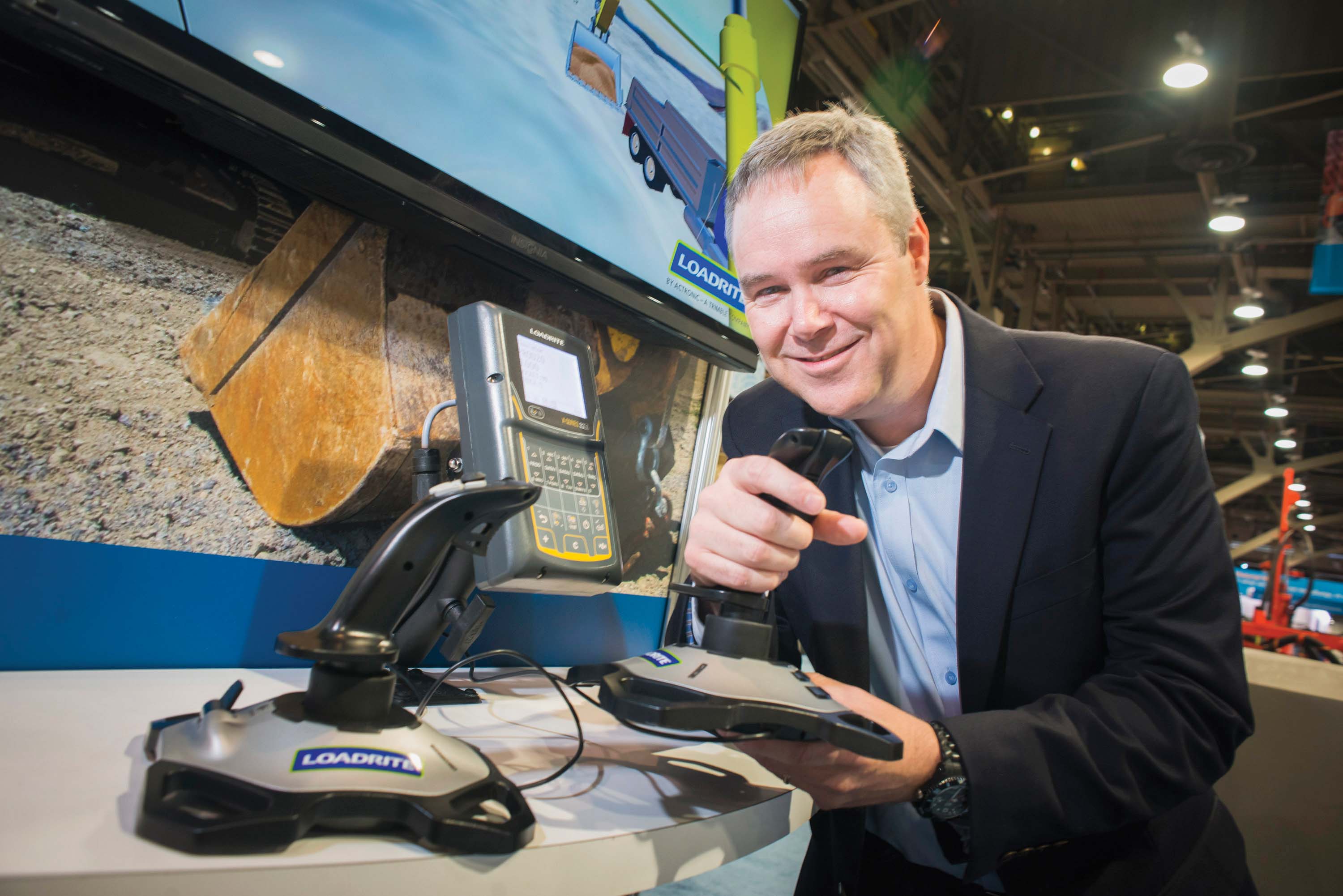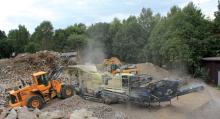
RSSLoad-out within any quarry operation is an important stage that needs to be well designed and considered.
There is scope to save time and increase profits by understanding the specific needs of a quarry weighbridge and stockpile areas and how the interface between these operations directly affects a quarry’s productivity and profit, says Michael van Koeverden of Quarry Mining Systems, Australia.
In a White Paper, Pitfalls and Profits in Load Out: Reduce Time and Increase Your Profitability, prepared for
“Every time we touch quarry products with plant and equipment it increases costs in wages, tyre wear, fuel spend and machine hours. Therefore we need to minimise our interaction with quarry products by automating processes where possible and when manual processes are required understanding them fully to maximise production output and quarry reliability,” says his paper, which explores the key issues for stockpile management and load-out and discusses the benefits that may be realised in utilising available technologies.
Some of these issues include measuring and improving load-out cycle times within a quarry site; the real costs of delays in loading and weighbridge hold-ups; unnecessary fuel costs from inefficiencies in the load-out process; how automating and streamlining load-out can benefit businesses, and how to get real efficiencies in mobile plant and equipment.
“Cycle load-out times are the measure of how quickly a customer will be loaded and ticketed across the quarry weighbridge and have left the site. When our customers are kept waiting in our quarry they are losing their truck utilisation and therefore profit.
This poor performance in quarry cycle times will impact the quarry owner/operator, as unhappy customers shift their business to competitors,” says the paper.
“Anything that impacts quarry load-out cycle times will be costly to your quarry operation; and the correct matching of mobile equipment is essential to realise the full efficiencies in this area. Quarry operators must train their people to ensure established processes and procedures are understood, clearly communicated and repeatable to maximise quarry profits. Where there is a mismatch in load-out equipment, processes and staff knowledge, problems creep in and profits fall directly as a result.
“Our quarry customers operate in a highly competitive environment, where margins are tight, and they are very focused on efficiencies in truck utilisation. Hauling aggregate is most profitable when the trucks are kept full at all times. Back loads on a trucks return journey are not always available and as a result cartage costs climb rapidly as the trucks drive empty.
Most contracts/projects are priced on a set number of loads per day to achieve slim margins to tight construction time frames. When delays occur, especially within a quarry, this is seen by our customer as unplanned delay and across a shift or day, may lead to a reduction in the number of loads completed and therefore customer revenue is lost.”
The paper goes on to explore in detail the real measurable costs of longer cycle times within the quarry along with sections on time in the quarry; stockpile/weighbridge layout (reducing bottlenecks); information sharing; measuring loader performance; loader operation, loading patterns; mobile equipment efficiency; loader availability; utilisation; load accuracy, and an example of mobile equipment efficiency.
(The full version of Michael van Koeverden’s Loadrite White Paper can be found at http://loadritescales.com; or http://quarryminingsystems.com.au).
Trimble is offering the integration of Loadrite X2350 excavator scales and L2180 wheeled loader scales with its latest management software. Loadrite weighing systems are said to help increase productivity and efficiency for excavator and wheeled loader operations, allowing material movements to be tracked and creating more efficient loading.
Integration with the software gives machine operators and managers instant access to excavator and wheeled loader payload information such as total bucket loads, trucks loaded and running totals. If additional reporting is required, the Loadrite systems have a separate monitor in the cab and accommodate an optional printer for outputting load tickets or end-of-shift reports in the field.
“The main advantage of the integration of Loadrite excavator and wheeled loader systems with
The software allows project managers to remotely manage daily or total payload reporting from Trimble Loadrite scale operations equipped with a Trimble SNM940 Connected Site Gateway, which is a telematics communications device.
Integrating payload weight information with fleet dynamics and cycle time tracking provides metrics for monitoring and improving both machine and project performance. Machine operators work as they normally would on site, entering data with the easy-to-use features on the Loadrite in-cab display. The Trimble SNM940 Connected Site Gateway automatically relays data to the software for near real-time analysis and action. The package then serves as the interface for managers to make allocation decisions and minimise bottlenecks with a series of reports on individual bucket loads, tonnes/hour and unused capacity.
In another move,
Wheeled loader production data can be viewed remotely in JDLink to boost loader productivity integration with the JDLink. The Loadrite L2180 includes information such as total bucket loads, trucks loaded, and totals by material in addition to other JDLink data.
The Loadrite L2180 for John Deere system has a separate monitor in the cab and accommodates an optional printer for outputting load tickets or end-of-shift reports in the field.
“John Deere WorkSight turns data into solutions to optimise machines, uptime, and customers’ job sites,” says Liz Quinn, product marketing manager, John Deere WorkSight. “Utilising JDLink telematics, we are able to bring Loadrite L2180 for John Deere payload reports straight to the quarry manager in the office, giving the customer more visibility to operations, which is incredibly valuable for making quick adjustments to cycle times or watching production trends over time.”
RDS Loadmaster a100
RDS Technology describes its new Loadmaster a100 on-board weighing system as being “the new industry benchmark in terms of accuracy and ease of use in difficult conditions and terrains.”
The CAN-based system combines cutting-edge sensor technology and signal processing techniques providing precise and consistent weight information.
With the ever-increasing focus on productivity,
“Loading correctly first time eradicates return trips to the stockpile reducing vehicle movement, fuel usage and machine and tyre wear,” says RDS Technology.
The unit is suitable for use with up to ten different attachments such as buckets or forks, and the system can be retrofitted onto wheeled, telescopic and tractor-type loaders.
The system continually measures hydraulic pressure using up to four sensors, and the pressure signals are captured and filtered through a weighing ‘arc’ provided by inclination sensors measuring the angle of the main boom. All signals are processed in the RDS Smart Box and the resultant weight calculation is sent to the terminal mounted in the cabin.
“SQL database capability with up to eight reference fields provides virtually unlimited inputs of products, customers, trucks, hauliers, locations, destinations, mix blends and notes. There is a blend facility with an infinite number of mixes and products,” says RDS Technology.
GPRS or Wi-Fi connectivity provides one or two-way communication with the back office to send and receive job information.
Interestingly, during the second quarter of 2014 all
The system is said to give unprecedented insight into machine productivity, monitoring the input of weight on the machine from suspension-mounted pressure sensors, and relaying this information to load software integrated into the machine’s electronics.
“Fully automatic OBW logs all transported loads, and the ensuing data is then shown on the operator’s display. The information can also be accessed remotely, thanks to Volvo’s advanced CareTrack telematics system. This allows complete payload management, giving access to data such as total transported load in tonnes; tonnes transported per litre of fuel; and number of cycles,” says Volvo CE.
OBW-equipped haulers are fitted with a load indicator light mounted outside the machine and this is clearly visible to the operator of the wheeled loader or excavator that is loading the hauler. A yellow light comes on when at part load, changing to green at nominal load and red when overloaded.
Volvo CE says this simple tool helps prevent overloading and the machine wear, tyre damage and excess fuel consumption that go with it.
“The OBW system also offers the ability to unlock a wealth of previously inaccessible information, such as the weight of carry-back left in the haul body after tipping. OBW helps show the true productivity of the machine, combining fuel efficiency with tons of mass moved. Additionally, it can help in improving operator performance. By measuring number of cycles, total of mass moved and load efficiency, site managers can compare and improve the productivity of its operators. The system also provides easy-to-understand daily, weekly or monthly productivity reports, which can be invaluable for site managers in assessing whether performance matches job-specific targets, or assisting in calculations for the next project,” says Volvo CE.
Situated in the Marquise basin between Boulogne sur Mer and Calais, northern France, the Carrieres de la Vallee Heureuse Quarries produce over 15,000tonnes of aggregates/day. With over 200hectares of a hard compact limestone deposit the company extract sand, gravel, limestone flux, limestone chippings, micro-sized limestone and rockfill, which are transported by road, rail, sea and river to customers in France, Belgium, the Netherlands and the UK.
With an average of 400 trucks (600 in peak periods) visiting the busy site daily, the quarries recognised the need to improve its customer service with regard to identification of customer requirements, monitoring orders and optimisation of truck loading on-site.
An order was awarded to
Previously the site was equipped with a weighbridge at the entrance, a weighbridge at the exit and a pre-checking bridge in the quarry but the new system comprises five weighbridges, two at the entrance, two at the exit and a pre-checking weighbridge in the quarry. The weighbridges are driver operated using BI WIN driver consoles.
The quarry company concluded that by rationalising the loading and movement of trucks and loading equipment, it has improved site safety and service and productivity ratios; benefitted from better visibility of loading operations, and as traffic is more fluid at the entrance and exit, the time on site has been optimised, accident risks have been reduced and the impact on the environment limited. It has also been able to eliminate overloading on departing vehicles.
Alternatively, users are able to interface their own indicator to the scales using analog output versions. For customers whose local regulations prevent the use of any wireless radio communication, radios can be disabled or a hardwired alternative chosen.
AX900 scales are available in a variety of lengths, capacities and configurations to weigh anything from single to multi-axle vehicles. They feature a low-profile overall height for easy loading.RSS









